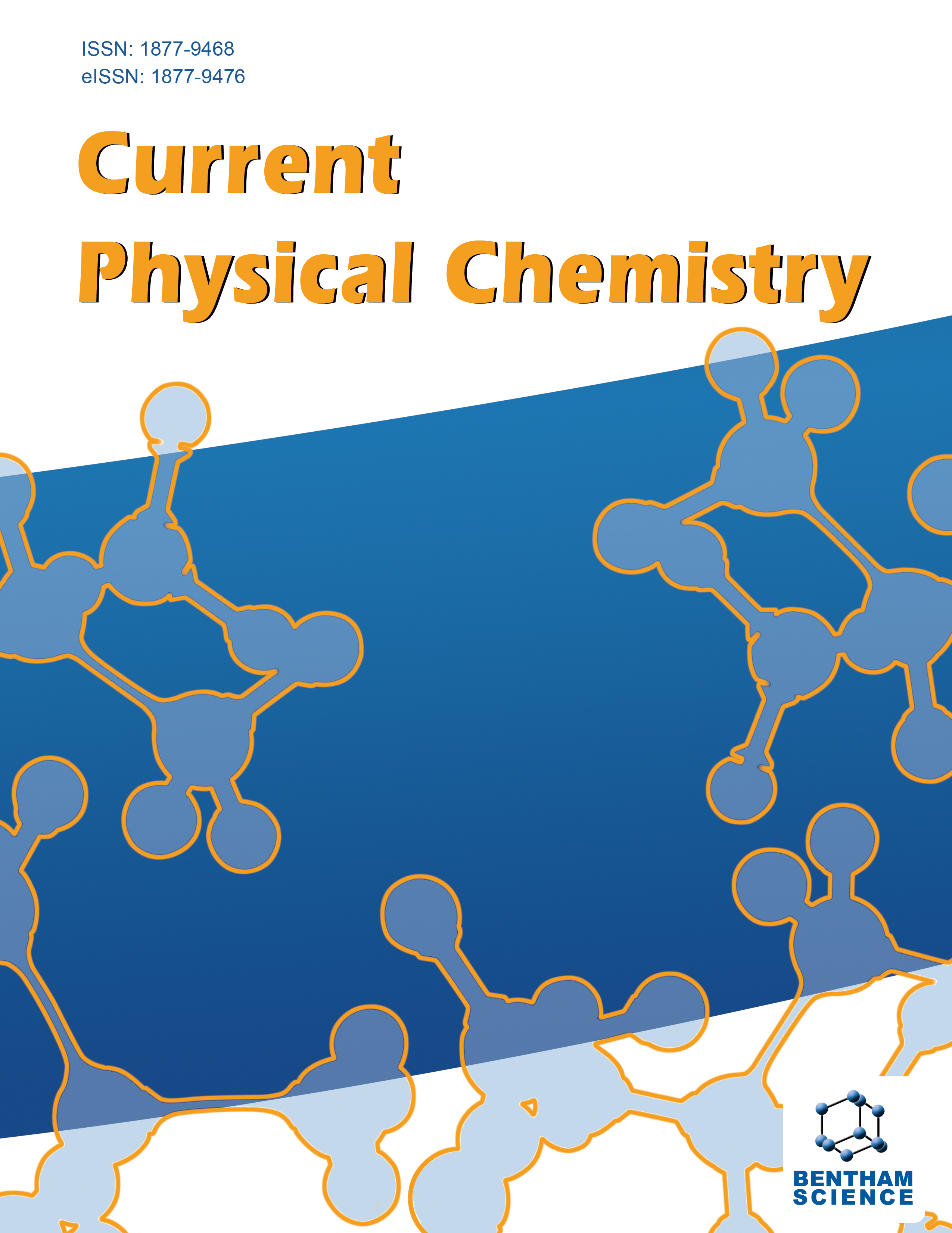- Home
- A-Z Publications
- Current Physical Chemistry
- Previous Issues
- Volume 3, Issue 3, 2013
Current Physical Chemistry - Volume 3, Issue 3, 2013
Volume 3, Issue 3, 2013
-
-
Graphene and Its Applications in Lithium Ion Batteries
More LessAuthors: Cunguo Wang and Qi LiGraphene, one-atom-thick sheet of graphite, has many unique properties of high conductivity and charge carrier mobility, huge specific surface area and high energy storage as well as excellent mechanical strength. During the past several years, a variety of graphene doped electrode materials were successfully prepared and applied in lithium ion batteries. In this review, we will summarize the recent advances in the s Read More
-
-
-
Preparation of Graphene Dispersion: A Review
More LessBy Jing WangGraphene has been attracted lots of attention for its unique properties and various applications in transistors, transparent conductors, sensors, etc. Many applications require stable and individual dispersion of graphene sheets in liquid phase. There are two ways to obtain graphene dispersion: 1) to disperse graphene powder in aqueous solution or organic solvents, 2) to exfoliate graphite into monolayer sheets in liquid phase direc Read More
-
-
-
Research Progress of Graphene-based Composite Materials
More LessAuthors: Dongzhi Lai, Wenxing Chen and Guohua JiangGraphene sheets have outstanding electrical, thermal, and mechanical properties. Furthermore, owing to the abundance of naturally existing graphite as the source material for graphene, it is considered an ideal reinforcing component to modify the properties of matrix, compared with other carbon nanofillers. This review will summarize the development of graphene/polymer composites, graphene/nanoparticle composi Read More
-
-
-
Review on the Applications of Functionalized Graphene Composites as Drug Delivery Carriers
More LessAuthors: Rijing Wang, Xinke Sun, Xiaohong Wang and Guohua JiangGraphene, whose discovery won the 2010 Nobel Prize in physics, has been a shining star in the material science in the past few years. Owing to its interesting electrical, optical, mechanical and chemical properties, graphene has found potential applications in a wide range of areas, including biomedicine, photocatalysis, nanoelectronics, etc. In this review, we summarize the latest progress of graphene in biological applications Read More
-
-
-
Synthesis and Application of Graphene Nanoribbons
More LessAuthors: Xiaochen Dong, Xin Zhao, Lianhui Wang and Wei HuangGraphene, a single-atom-thick planar sheet of graphite with zero-band gap, has great potential applications in nanoelectrics, biosensing, energy storage owing to its unique electrical, mechanical, and physical properties. Graphene nanoribbons (GNRs) are narrow and straight-edged stripes of graphene sheets. They are predicted to exhibit band gaps useful for field-effect transistors with high on/off ratio and carrier mobility. Ov Read More
-
-
-
Transparent and Conductive Films Based on Graphene: A Brief Review
More LessAuthors: Xiangmei Liu, Qing Long, Shu-Juan Liu, Qiang Zhao and Wei HuangHigh values of Young’s modulus, excellent fracture strength, extremely high carrier mobility and optical transmittance make graphene films a promising and emerging candidate for next generation transparent and conductive electrodes for future optoelectronic devices. In this brief review, the research progress of graphene-based transparent and conductive electrode will be presented, with an emphasis on the prep Read More
-
-
-
Nano Dimensional Hybrid Organo-clay Langmuir-Blodgett Films
More LessAuthors: Syed A. Hussain, Sekhar Chakraborty and Debajyoti BhattacharjeeClay mineral particles are interesting nanosized building blocks due to their high aspect ratio and the chemical properties. The main interest in this nanosized building blocks results essentially from the colloidal size and the permanent structural charge of the particles. Smectites or swelling clay minerals are naturally occurring nanomaterials that can be fully delaminated to elementary clay mineral platelets in dilute aqueous disp Read More
-
-
-
Transition Metal Doped ZnO as a Host of Dilute Magnetic Semiconductor
More LessAuthors: Swarup K. Neogi, Aritra Banerjee and Sudipta BandyopadhyayIn the last couple of years, dilute magnetic semiconductor (DMS) has drawn significant interest in the scientific community. Primarily this is due to its potential for application in spintronic devices. The euphoria acquired momentum following the theoretical prediction that diamagnetic ZnO can be made ferromagnetic even at room temperature by doping with transition metal (TM) ions such as Mn. The exact nature of the ferro Read More
-
-
-
Influence of Molecular Stereochemistry on the Continuum Model for Van der Waals Interaction between β-Cyclodextrin and Linear Molecules
More LessBy Elena AlviraThe aim of the present work is to analyse the dependence of the interaction energy between β-cyclodextrin and linear guest molecules on the composition and atomic distribution of the latter. The intermolecular energy is modelled by a Lennard-Jones potential where the molecular composition is represented by different parameters (σ1 ,ε1 ,σ2 ,ε2, p,mi), and a continuum description of the guest and cavity walls. The Read More
-
-
-
UV-light Activated TiO2 Nanoparticles for Photocatalytic Degradation of Orange 2G in Industrial Wastewaters
More LessAuthors: Safenaz M. Reda and A. A. Al-ArfajTiO2 nanoparticles were prepared by the sol–gel method using sodium dodecyl sulfonate, triton, tetrabutyl ammonium bromide surfactants and tested for the removal of Orange 2G dye from aqueous under UV light. The synthesized photocatalysts were characterized by XRD, FTIR, TEM, and BET measurements. The XRD patterns indicated that the crystalline phase of TiO2 is mainly anatase with crystallite sizes of 17.7-12.6 n Read More
-
Most Read This Month
Article
content/journals/cpc
Journal
10
5
false
en


